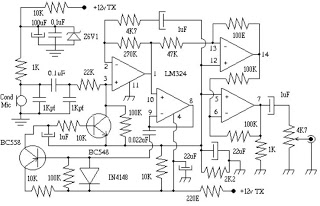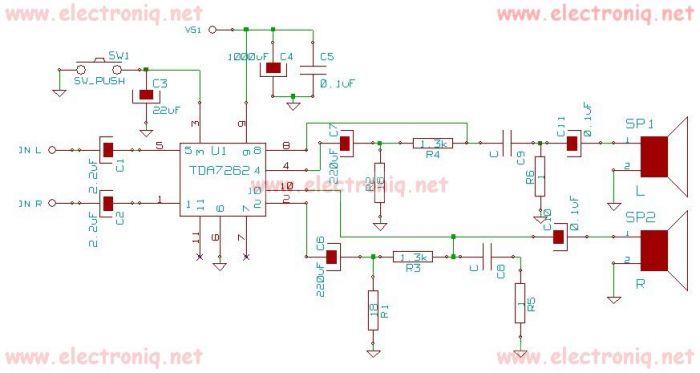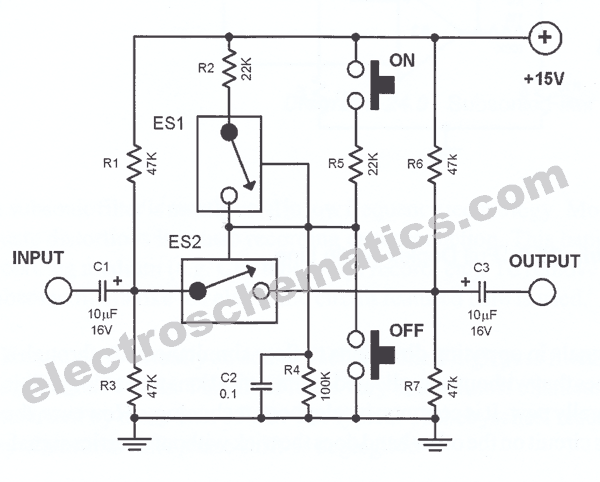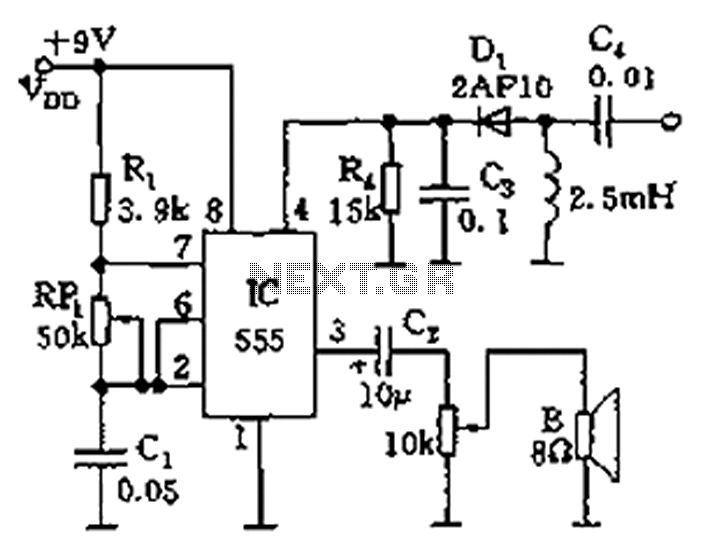
Audio Line Driver
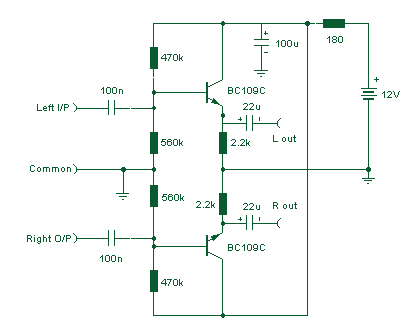
The preamplifier described is engineered with a low output impedance, specifically designed to handle long cable runs. This feature allows for listening to a remote music source without the need for expensive screened cables. The preamplifier boasts a very low output impedance of approximately 16 ohms at 1KHz. This characteristic enables the use of common types of wire such as bell wire, loudspeaker wire, or alarm cable for the connection.
The placement of the preamplifier is crucial for optimum performance. It is recommended to place it near the remote music source, such as a CD player. Following this, the cable is run to a remote location where the user intends to listen. This setup is ideal for those who wish to have a remote audio setup without compromising on the audio quality.
The output of this preamplifier has a gain that is slightly less than one. This implies that the output signal is a bit smaller than the input signal. As a result, an external amplifier is required to drive loudspeakers. The external amplifier will boost the signal from the preamplifier to a level that is sufficient to drive the loudspeakers and produce sound.
It is essential to note that the preamplifier's low output impedance and gain less than one are advantageous in reducing noise and interference, especially in setups involving long cable runs. However, the need for an external amplifier to drive loudspeakers may require additional investment in equipment. Therefore, this preamplifier setup is ideal for users who value high-quality sound and have the capability to invest in the necessary audio equipment.This preamplifier has a low output impedance, and is designed to drive long cables, allowing you to listen to a remote music source without having to buy expensive screened cables. The very low output impedance of around 16 ohms at 1KHz, makes it possible to use ordinary bell wire,loudspeaker or alarm cable for connection.
The preamplifier must be placed near the remote music source, for example a CD player. The cable is then run to a remote location where you want to listen. The output of this preamp has a gain of slightly less than one, so an external amplifier must be used to drive loudspeakers. 🔗 External reference
The placement of the preamplifier is crucial for optimum performance. It is recommended to place it near the remote music source, such as a CD player. Following this, the cable is run to a remote location where the user intends to listen. This setup is ideal for those who wish to have a remote audio setup without compromising on the audio quality.
The output of this preamplifier has a gain that is slightly less than one. This implies that the output signal is a bit smaller than the input signal. As a result, an external amplifier is required to drive loudspeakers. The external amplifier will boost the signal from the preamplifier to a level that is sufficient to drive the loudspeakers and produce sound.
It is essential to note that the preamplifier's low output impedance and gain less than one are advantageous in reducing noise and interference, especially in setups involving long cable runs. However, the need for an external amplifier to drive loudspeakers may require additional investment in equipment. Therefore, this preamplifier setup is ideal for users who value high-quality sound and have the capability to invest in the necessary audio equipment.This preamplifier has a low output impedance, and is designed to drive long cables, allowing you to listen to a remote music source without having to buy expensive screened cables. The very low output impedance of around 16 ohms at 1KHz, makes it possible to use ordinary bell wire,loudspeaker or alarm cable for connection.
The preamplifier must be placed near the remote music source, for example a CD player. The cable is then run to a remote location where you want to listen. The output of this preamp has a gain of slightly less than one, so an external amplifier must be used to drive loudspeakers. 🔗 External reference
